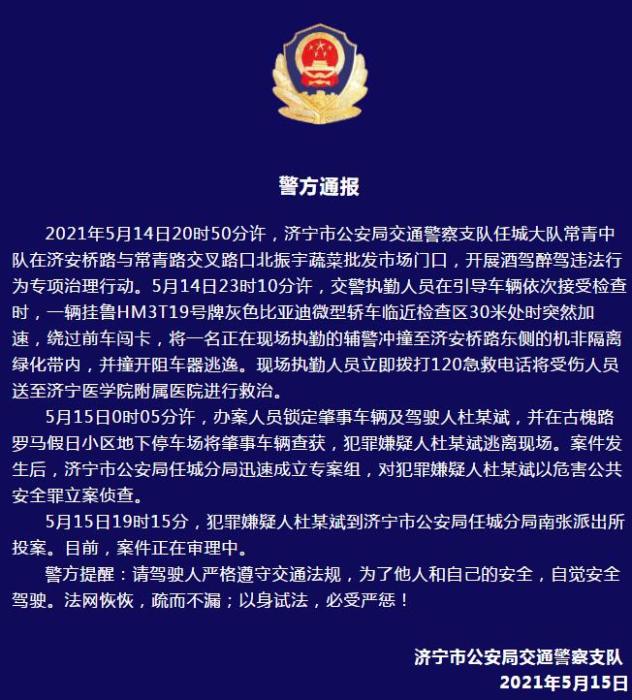pandas 用户数据分析2
2023-02-07 16:09:44
来源:博客园
user_analysis
第一部分:数据类型处理¶ 数据加载¶ 字段含义: user_id:用户ID order_dt:购买日期 order_product:购买产品的数量 order_amount:购买金额观察数据¶ 查看数据的数据类型数据中是否存储在缺失值将order_dt转换成时间类型查看数据的统计描述 计算所有用户购买商品的平均数量 计算所有用户购买商品的平均花费 在源数据中添加一列表示月份:astype(datetime64[M])In[]:
# 加载数据,定义字段含义import pandas as pdimport numpy as npfrom matplotlib import pyplot as pltpd.set_option("display.float_format", lambda x: "%.3f" % x)df = pd.read_csv("./CDNOW_master.txt", header=None, sep="\s+", names=["user_id", "order_dt", "order_product", "order_amount"])df.head() Out[]:
user_id order_dt order_product order_amount 0 1 19970101 1 11.770 1 2 19970112 1 12.000 2 2 19970112 5 77.000 3 3 19970102 2 20.760 4 3 19970330 2 20.760
In[]:
# 将order_dt转换成时间类型,格式化时间df["order_dt"] = pd.to_datetime(df["order_dt"], format="%Y%m%d") In[]:
# 添加month列df["month"] = df["order_dt"].values.astype("datetime64[M]")df.head(20) Out[]:
user_id order_dt order_product order_amount month 0 1 1997-01-01 1 11.770 1997-01-01 1 2 1997-01-12 1 12.000 1997-01-01 2 2 1997-01-12 5 77.000 1997-01-01 3 3 1997-01-02 2 20.760 1997-01-01 4 3 1997-03-30 2 20.760 1997-03-01 5 3 1997-04-02 2 19.540 1997-04-01 6 3 1997-11-15 5 57.450 1997-11-01 7 3 1997-11-25 4 20.960 1997-11-01 8 3 1998-05-28 1 16.990 1998-05-01 9 4 1997-01-01 2 29.330 1997-01-01 10 4 1997-01-18 2 29.730 1997-01-01 11 4 1997-08-02 1 14.960 1997-08-01 12 4 1997-12-12 2 26.480 1997-12-01 13 5 1997-01-01 2 29.330 1997-01-01 14 5 1997-01-14 1 13.970 1997-01-01 15 5 1997-02-04 3 38.900 1997-02-01 16 5 1997-04-11 3 45.550 1997-04-01 17 5 1997-05-31 3 38.710 1997-05-01 18 5 1997-06-16 2 26.140 1997-06-01 19 5 1997-07-22 2 28.140 1997-07-01
In[]:
# 计算所有用户购买商品的平均数量 2.410040# 计算所有用户购买商品的平均花费 35.893648df.describe()[["order_product", "order_amount"]] Out[]:
order_product order_amount count 69659.000 69659.000 mean 2.410 35.894 std 2.334 36.282 min 1.000 0.000 25% 1.000 14.490 50% 2.000 25.980 75% 3.000 43.700 max 99.000 1286.010
第二部分:按月数据分析¶ 用户每月花费的总金额¶ 绘制曲线图展示所有用户每月的产品购买量¶ 所有用户每月的消费总次数¶ 统计每月的消费人数¶ In[]:
# 用户每月花费的总金额,并绘制折线图df.groupby(by="month")["order_amount"].sum().plot() Out[]:
In[]:
# 所有用户每月的产品购买量df.groupby(by="month")["order_product"].sum().plot() Out[]:
In[]:
# 所有用户每月的消费总次数df.groupby(by="month")["user_id"].count() Out[]:
month1997-01-01 89281997-02-01 112721997-03-01 115981997-04-01 37811997-05-01 28951997-06-01 30541997-07-01 29421997-08-01 23201997-09-01 22961997-10-01 25621997-11-01 27501997-12-01 25041998-01-01 20321998-02-01 20261998-03-01 27931998-04-01 18781998-05-01 19851998-06-01 2043Name: user_id, dtype: int64 In[]:
# 统计每月的消费人数df.groupby(by="month")["user_id"].nunique() Out[]:
month1997-01-01 78461997-02-01 96331997-03-01 95241997-04-01 28221997-05-01 22141997-06-01 23391997-07-01 21801997-08-01 17721997-09-01 17391997-10-01 18391997-11-01 20281997-12-01 18641998-01-01 15371998-02-01 15511998-03-01 20601998-04-01 14371998-05-01 14881998-06-01 1506Name: user_id, dtype: int64 第三部分: 用户个体消费数据分析¶ 用户消费总金额和消费总次数的统计描述¶ 用户消费金额和消费次数的散点图¶ 各个用户消费总金额的直方分布图(消费金额在1000之内的分布)¶ 各个用户消费的总数量的直方分布图(消费商品的数量在100次之内的分布)¶ In[]:
# 用户消费总金额df.groupby(by="user_id")["order_amount"].sum() Out[]:
user_id1 11.7702 89.0003 156.4604 100.5005 385.610 ... 23566 36.00023567 20.97023568 121.70023569 25.74023570 94.080Name: order_amount, Length: 23570, dtype: float64 In[]:
# 用户消费总次数df.groupby(by="user_id")["order_amount"].count() Out[]:
user_id1 12 23 64 45 11 ..23566 123567 123568 323569 123570 2Name: order_amount, Length: 23570, dtype: int64 In[]:
# 用户消费金额和消费次数的散点图# 用户消费金额money = df.groupby(by="user_id")["order_amount"].sum()# 用户消费次数times = df.groupby(by="user_id")["order_product"].count()# 绘图plt.scatter(times, money) Out[]:
In[]:
# 各个用户消费总金额的直方分布图(消费金额在1000之内的分布)df.groupby(by="user_id").sum().query("order_amount < 1000")["order_amount"].hist() C:\Users\chenh\AppData\Local\Temp\ipykernel_22864\701786761.py:2: FutureWarning: The default value of numeric_only in DataFrameGroupBy.sum is deprecated. In a future version, numeric_only will default to False. Either specify numeric_only or select only columns which should be valid for the function. df.groupby(by="user_id").sum().query("order_amount < 1000")["order_amount"].hist() Out[]:
In[]:In[]:
# 各个用户消费的总数量的直方分布图(消费商品的数量在100次之内的分布)df.groupby(by="user_id").sum().query("order_product < 100")["order_product"].hist() C:\Users\chenh\AppData\Local\Temp\ipykernel_22864\2679188117.py:2: FutureWarning: The default value of numeric_only in DataFrameGroupBy.sum is deprecated. In a future version, numeric_only will default to False. Either specify numeric_only or select only columns which should be valid for the function. df.groupby(by="user_id").sum().query("order_product < 100")["order_product"].hist() Out[]:
第四部分: 用户消费行为分析¶ 用户第一次消费的月份分布,和人数统计¶ 绘制线形图用户最后一次消费的时间分布,和人数统计¶ 绘制线形图新老客户的占比¶ 消费一次为新用户消费多次为老用户 分析出每一个用户的第一个消费和最后一次消费的时间 agg(["func1func2]):对分组后的结果进行指定聚合 分析出新老客户的消费比例用户分层¶ 分析得出每个用户的总购买量和总消费金额and最近一次消费的时间的表格rfmRFM模型设计 R表示客户最近一次交易时间的间隔 /np.timedelta64(1,"D"):去除days。 F表示客户购买商品的总数量,F值越大,表示客户交易越频繁,反之则表示客户交易不够活跃。 M表示客户交易的金额。M值越大,表示客户价值越高,反之则表示客户价值越低。 将R,F,M作用到rfm表中根据价值分层,将用户分为: "重要价值客户" "重要保持客户" "重要挽留客户" "重要发展客户" "一般价值客户" "一般保持客户" "一般挽留客户" "一般发展客户" 使用已有的分层模型rfm_funcIn[]:
# 用户第一次消费的月份统计,和人数统计,绘制折线图first_con = df.groupby(by="user_id")["month"].min().value_counts().plot() In[]:
# 用户最后一次消费的月份统计和人数统计,绘制折线图df.groupby(by="user_id")["month"].max().value_counts().plot() Out[]:
In[]:
# # 新老用户占比# 消费一次新用户,消费多次老用户# 如何获知用户是否为第一次消费? 可以根据用户的消费时间进行判定?# 如果用户的第一次消费时间和最后一次消费时间一样,则该用户只消费了一次为新用户,否则为老用户new_old_con_df = df.groupby(by="user_id")["order_dt"].agg(["min","max"])new_old = new_old_con_df["min"] == new_old_con_df["max"].valuesnew = new_old.value_counts()[True]old = new_old.value_counts()[False]new_proportion = new / (new + old)old_proportion = old / (new + old)"老用户占比:{:.2f}%".format(old_proportion*100),"新用户占比:{:.2f}%".format(new_proportion*100) Out[]:
("老用户占比:48.86%", "新用户占比:51.14%") In[]:
# 分析得出每个用户的总购买量和总消费金额and最近一次消费的时间的表格rfm 用透视表rfm = df.pivot_table(index="user_id", aggfunc={"order_product":"sum", "order_amount": "sum", "order_dt":"max"}) In[]:
# R表示用户最近一次交易时间的间隔# R = df中最大的日期 - 每个用户最后一次交易的日期# 去除days用 /np.timedelta64(1,"D")today = df["order_dt"].max()rfm["R"] = (today - df.groupby(by="user_id")["order_dt"].max()) / np.timedelta64(1,"D") In[]:
# 删除order_dt字段rfm.drop("order_dt", axis=1, inplace=True) In[]:
# 重命名字段名为MRFrfm.columns = ["M", "F", "R"]rfm Out[]:
M F R user_id 1 11.770 1 545.000 2 89.000 6 534.000 3 156.460 16 33.000 4 100.500 7 200.000 5 385.610 29 178.000 ... ... ... ... 23566 36.000 2 462.000 23567 20.970 1 462.000 23568 121.700 6 434.000 23569 25.740 2 462.000 23570 94.080 5 461.000
23570 rows × 3 columns
In[]:
# RFM模型def rfm_func(x): level = x.map(lambda x: "1" if x >= 0 else "0") label = level.R + level.F + level.M d = { "111": "重要价值客户", "011": "重要保持客户", "101": "重要挽留客户", "001": "重要发展客户", "110": "一般价值客户", "010": "一般保持客户", "100": "一般挽留客户", "000": "一般发展客户" } result = d[label] return result In[]:
# 将rfm_func计算的结果返回给新建label列 (lambda x: x - x.mean()).rfm_funcrfm["label"] = rfm.apply(lambda x: x - x.mean()).apply(rfm_func, axis=1)rfm.head() Out[]:
M F R label user_id 1 11.770 1 545.000 一般挽留客户 2 89.000 6 534.000 一般挽留客户 3 156.460 16 33.000 重要保持客户 4 100.500 7 200.000 一般发展客户 5 385.610 29 178.000 重要保持客户
第五部分: 用户的生命周期¶ 将用户划分为活跃用户和其他用户¶ 统计每个用户每个月的消费次数统计每个用户每个月是否消费,消费记录为1否则记录为0 知识点: DataFrame的apply和applymap的区别 applymap:返回df 将函数做用于DataFrame中的所有元素(elements) apply:返回Series apply()将一个函数作用于DataFrame中的每个行或者列将用户按照每一个月份分成:¶ unreg:观望用户(前两月没买,第三个月才第一次买,则用户前两个月为观望用户)。unactive:首月购买后,后序月份没有购买则在没有购买的月份中该用户的为非活用户。 new:当前月就进行首次购买的用户在当前月为新用户active:连续月份购买的用户在这些月中为活跃用户return:购买之后间隔n月再次购买的第一个月份为该月份的回头客In[]:
# 统计每个用户每个月的消费次数 用透视 var:user_month_count_dfuser_month_count_df = df.pivot_table(index="user_id",values="order_dt",aggfunc="count", columns="month").fillna(value=0)user_month_count_df Out[]:
month 1997-01-01 1997-02-01 1997-03-01 1997-04-01 1997-05-01 1997-06-01 1997-07-01 1997-08-01 1997-09-01 1997-10-01 1997-11-01 1997-12-01 1998-01-01 1998-02-01 1998-03-01 1998-04-01 1998-05-01 1998-06-01 user_id 1 1.000 0.000 0.000 0.000 0.000 0.000 0.000 0.000 0.000 0.000 0.000 0.000 0.000 0.000 0.000 0.000 0.000 0.000 2 2.000 0.000 0.000 0.000 0.000 0.000 0.000 0.000 0.000 0.000 0.000 0.000 0.000 0.000 0.000 0.000 0.000 0.000 3 1.000 0.000 1.000 1.000 0.000 0.000 0.000 0.000 0.000 0.000 2.000 0.000 0.000 0.000 0.000 0.000 1.000 0.000 4 2.000 0.000 0.000 0.000 0.000 0.000 0.000 1.000 0.000 0.000 0.000 1.000 0.000 0.000 0.000 0.000 0.000 0.000 5 2.000 1.000 0.000 1.000 1.000 1.000 1.000 0.000 1.000 0.000 0.000 2.000 1.000 0.000 0.000 0.000 0.000 0.000 ... ... ... ... ... ... ... ... ... ... ... ... ... ... ... ... ... ... ... 23566 0.000 0.000 1.000 0.000 0.000 0.000 0.000 0.000 0.000 0.000 0.000 0.000 0.000 0.000 0.000 0.000 0.000 0.000 23567 0.000 0.000 1.000 0.000 0.000 0.000 0.000 0.000 0.000 0.000 0.000 0.000 0.000 0.000 0.000 0.000 0.000 0.000 23568 0.000 0.000 1.000 2.000 0.000 0.000 0.000 0.000 0.000 0.000 0.000 0.000 0.000 0.000 0.000 0.000 0.000 0.000 23569 0.000 0.000 1.000 0.000 0.000 0.000 0.000 0.000 0.000 0.000 0.000 0.000 0.000 0.000 0.000 0.000 0.000 0.000 23570 0.000 0.000 2.000 0.000 0.000 0.000 0.000 0.000 0.000 0.000 0.000 0.000 0.000 0.000 0.000 0.000 0.000 0.000
23570 rows × 18 columns
In[]:
# 统计每个用户每个月是否消费,消费记录为1否则记录为0 var:df_purchasedf_purchase = user_month_count_df.applymap(lambda x : 1 if x >=1 else 0 )df_purchase Out[]:
month 1997-01-01 1997-02-01 1997-03-01 1997-04-01 1997-05-01 1997-06-01 1997-07-01 1997-08-01 1997-09-01 1997-10-01 1997-11-01 1997-12-01 1998-01-01 1998-02-01 1998-03-01 1998-04-01 1998-05-01 1998-06-01 user_id 1 1 0 0 0 0 0 0 0 0 0 0 0 0 0 0 0 0 0 2 1 0 0 0 0 0 0 0 0 0 0 0 0 0 0 0 0 0 3 1 0 1 1 0 0 0 0 0 0 1 0 0 0 0 0 1 0 4 1 0 0 0 0 0 0 1 0 0 0 1 0 0 0 0 0 0 5 1 1 0 1 1 1 1 0 1 0 0 1 1 0 0 0 0 0 ... ... ... ... ... ... ... ... ... ... ... ... ... ... ... ... ... ... ... 23566 0 0 1 0 0 0 0 0 0 0 0 0 0 0 0 0 0 0 23567 0 0 1 0 0 0 0 0 0 0 0 0 0 0 0 0 0 0 23568 0 0 1 1 0 0 0 0 0 0 0 0 0 0 0 0 0 0 23569 0 0 1 0 0 0 0 0 0 0 0 0 0 0 0 0 0 0 23570 0 0 1 0 0 0 0 0 0 0 0 0 0 0 0 0 0 0
23570 rows × 18 columns
In[]:
# 用户生命周期模型,固定算法def active_status(data): status = [] for i in range(18): # 若本月没有消费 if data[i] == 0: if len(status) > 0: if status[i-1] == "unreg": status.append("unreg") else: status.append("unactive") else: status.append("unreg") # 若本月消费 else: if len(status) == 0: status.append("new") else: if status[i-1] == "unactive": status.append("return") elif status[i-1] == "ureg": status.append("new") else: status.append("active") return status In[]:
# 将df_purchase中的原始数据0和1修改为new,unactive...返回新var:df_purchase_newdf_purchase_new = df_purchase.apply(active_status,axis=1)df_purchase_new Out[]:
user_id1 [new, unactive, unactive, unactive, unactive, ...2 [new, unactive, unactive, unactive, unactive, ...3 [new, unactive, return, active, unactive, unac...4 [new, unactive, unactive, unactive, unactive, ...5 [new, active, unactive, return, active, active... ... 23566 [unreg, unreg, active, unactive, unactive, una...23567 [unreg, unreg, active, unactive, unactive, una...23568 [unreg, unreg, active, active, unactive, unact...23569 [unreg, unreg, active, unactive, unactive, una...23570 [unreg, unreg, active, unactive, unactive, una...Length: 23570, dtype: object In[]:
# 将pivoted_status的values转成list,再将list转成DataFrame# 将df_purchase的index作为df_pruchase的index,columns相同# var:df_puechase_newdf_purchase_new1 = pd.DataFrame(data=df_purchase_new.to_list(),index=df_purchase.index, columns=df_purchase.columns)df_purchase_new1.head() Out[]:
month 1997-01-01 1997-02-01 1997-03-01 1997-04-01 1997-05-01 1997-06-01 1997-07-01 1997-08-01 1997-09-01 1997-10-01 1997-11-01 1997-12-01 1998-01-01 1998-02-01 1998-03-01 1998-04-01 1998-05-01 1998-06-01 user_id 1 new unactive unactive unactive unactive unactive unactive unactive unactive unactive unactive unactive unactive unactive unactive unactive unactive unactive 2 new unactive unactive unactive unactive unactive unactive unactive unactive unactive unactive unactive unactive unactive unactive unactive unactive unactive 3 new unactive return active unactive unactive unactive unactive unactive unactive return unactive unactive unactive unactive unactive return unactive 4 new unactive unactive unactive unactive unactive unactive return unactive unactive unactive return unactive unactive unactive unactive unactive unactive 5 new active unactive return active active active unactive return unactive unactive return active unactive unactive unactive unactive unactive
In[]:
# 将每月不同活跃用户进行计数 var:purchase_status_ctpurchase_status_ct = df_purchase_new1.apply(lambda x : pd.value_counts(x),axis=0).fillna(0)purchase_status_ct.head() Out[]:
month 1997-01-01 1997-02-01 1997-03-01 1997-04-01 1997-05-01 1997-06-01 1997-07-01 1997-08-01 1997-09-01 1997-10-01 1997-11-01 1997-12-01 1998-01-01 1998-02-01 1998-03-01 1998-04-01 1998-05-01 1998-06-01 active 0.000 9633.000 8929.000 1773.000 852.000 747.000 746.000 604.000 528.000 532.000 624.000 632.000 512.000 472.000 571.000 518.000 459.000 446.000 new 7846.000 0.000 0.000 0.000 0.000 0.000 0.000 0.000 0.000 0.000 0.000 0.000 0.000 0.000 0.000 0.000 0.000 0.000 return 0.000 0.000 595.000 1049.000 1362.000 1592.000 1434.000 1168.000 1211.000 1307.000 1404.000 1232.000 1025.000 1079.000 1489.000 919.000 1029.000 1060.000 unactive 0.000 6689.000 14046.000 20748.000 21356.000 21231.000 21390.000 21798.000 21831.000 21731.000 21542.000 21706.000 22033.000 22019.000 21510.000 22133.000 22082.000 22064.000 unreg 15724.000 7248.000 0.000 0.000 0.000 0.000 0.000 0.000 0.000 0.000 0.000 0.000 0.000 0.000 0.000 0.000 0.000 0.000
In[]:
# 转置t_purchase_status_ct = purchase_status_ct.Tt_purchase_status_ct Out[]:
active new return unactive unreg month 1997-01-01 0.000 7846.000 0.000 0.000 15724.000 1997-02-01 9633.000 0.000 0.000 6689.000 7248.000 1997-03-01 8929.000 0.000 595.000 14046.000 0.000 1997-04-01 1773.000 0.000 1049.000 20748.000 0.000 1997-05-01 852.000 0.000 1362.000 21356.000 0.000 1997-06-01 747.000 0.000 1592.000 21231.000 0.000 1997-07-01 746.000 0.000 1434.000 21390.000 0.000 1997-08-01 604.000 0.000 1168.000 21798.000 0.000 1997-09-01 528.000 0.000 1211.000 21831.000 0.000 1997-10-01 532.000 0.000 1307.000 21731.000 0.000 1997-11-01 624.000 0.000 1404.000 21542.000 0.000 1997-12-01 632.000 0.000 1232.000 21706.000 0.000 1998-01-01 512.000 0.000 1025.000 22033.000 0.000 1998-02-01 472.000 0.000 1079.000 22019.000 0.000 1998-03-01 571.000 0.000 1489.000 21510.000 0.000 1998-04-01 518.000 0.000 919.000 22133.000 0.000 1998-05-01 459.000 0.000 1029.000 22082.000 0.000 1998-06-01 446.000 0.000 1060.000 22064.000 0.000
关键词:
所有用户
最后一次
购买商品
user_analysis第一部分:数据类型处理& 182;数据加载& 182;字段含义:user_id:用户IDorder_dt:购买日期o...
车顶维权女车主:重启战斗模式希望今年能明确特斯拉案件结果
陪伴十年被撞报废!男子躲过一劫磕头跪别爱车网友:它值得


 (资料图片)
(资料图片)







